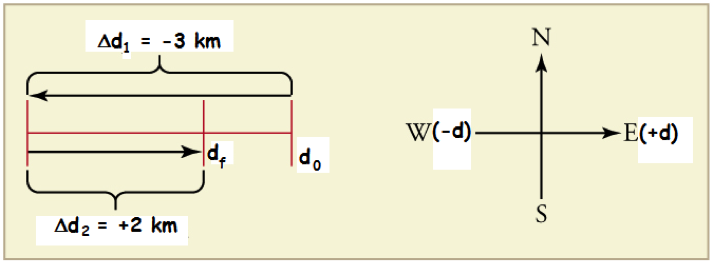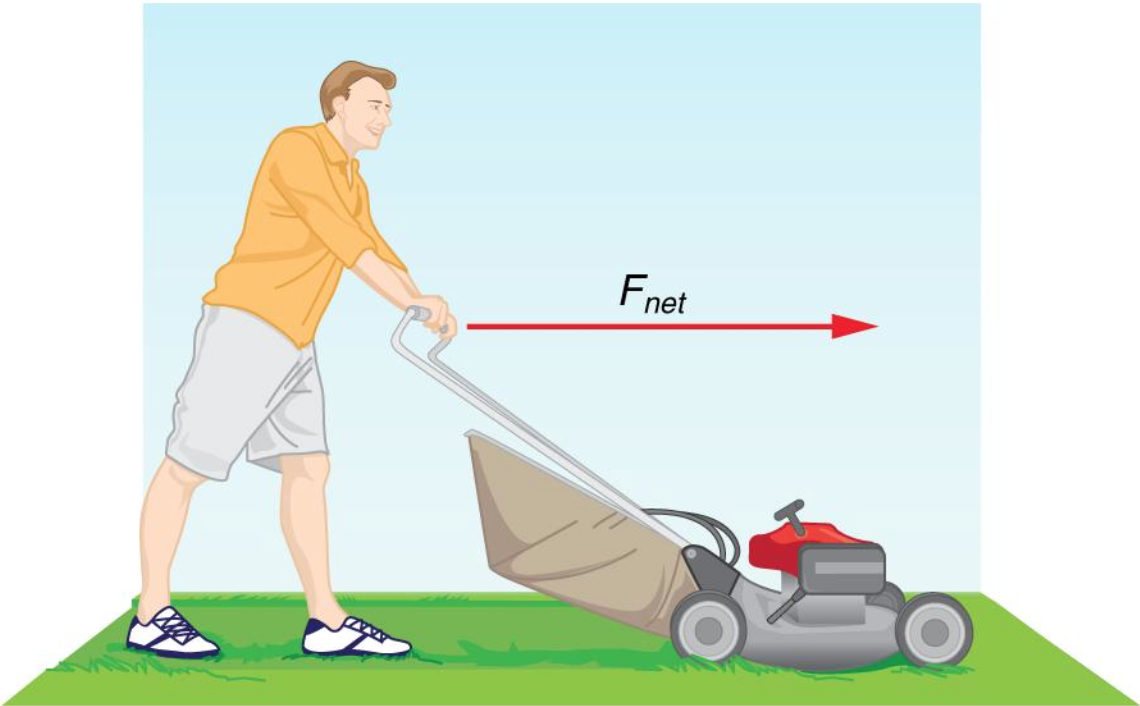| << Chapter < Page | Chapter >> Page > |
In this activity you will use a scale to investigate mass and weight.

| Planet | Mass | Weight: |
|---|---|---|
| Mars | 12 kg | 5N |
| Venus | 20 kg | 90N |
| Saturn | 1 kg | 13N |
Explain that, even though a scale gives a mass, it actually measures weight. Scales are calibrated to show the correct mass on Earth. They would give different results on the Moon, because the force of gravity is weaker on the Moon.
This video reviews Newton's second law of motion and how net external force and acceleration relate to one another and to mass. It also covers units of force, mass, and acceleration and goes over a sample problem.
Newton's other laws:
Suppose that the net external force (push minus friction) exerted on a lawn mower is 51 N parallel to the ground. The mass of the mower is 240 kg. What is its acceleration?

Since and m are given, the acceleration can be calculated directly from Newton’s second law: .
Solving Newton’s second law for the acceleration, we find that the magnitude of the acceleration, a, is . Entering the given values for net external force and mass gives . Inserting the units for N yields .
Prior to manned space flights, rocket sleds were used to test aircraft, missile equipment, and physiological effects on humans at high accelerations. Rocket sleds consisted of a platform mounted on one or two rails and propelled by several rockets.
Calculate the magnitude of force exerted by each rocket, called its thrust T, for the four-rocket propulsion system shown below. The sled’s initial acceleration is 49 m/s2, the mass of the system is 2100 kg, and the force of friction opposing the motion is 650 N.
| Types of Links | URLs |
| External link | http://upload.wikimedia.org/wikipedia/commons/0/00/Herrenhaustag_MI_Juni_2009_205.jpg |
| Internal link | http://cnx.org/contents/b3c1e1d2-839c-42b0-a314-e119a8aafbdd@8.53:49/Concepts_of_Biology |
The system of interest is the rocket sled. Although forces act vertically on the system, they must cancel because the system does not accelerate vertically. This leaves us with only horizontal forces to consider. We’ll assign the direction to the right as the positive direction. See the free-body diagram in the figure.
We start with Newton’s second law and look for ways to find the thrust T of the engines. Because all forces and acceleration are along a line, we need only consider the magnitudes of these quantities in the calculations. We begin with
Before the discoveries of Kepler, Copernicus, Galileo, Newton, and others, the solar system was thought to revolve around Earth as shown in Figure 04_03_solar_img (a). This is called the Ptolemaic (the P is silent) view, for the Greek philosopher who lived in the second century AD. This model is characterized by a list of facts for the motions of planets with no cause and effect explanation. There tended to be a different rule for each heavenly body and a general lack of simplicity.
Figure 04_03_solar_img (b) represents the modern or Copernican model . In this model, a small set of rules and a single underlying force explain not only all motions in the solar system, but all other situations involving gravity. The breadth and simplicity of the laws of physics are compelling. As our knowledge of nature has grown, the basic simplicity of its laws has become ever more evident.
Nicolaus Copernicus (1473 – 1543) first had the idea that the planets circle the Sun about 1514. It took him almost 20 years to work out the mathematical details for his model. He waited another 10 years or so to publish his work. It is thought he hesitated because he was afraid people would make fun of his theory. Actually, the reaction of many people was more one of fear and anger. Many people felt the Copernican model threatened their basic belief system. About 100 years later, the astronomer Galileo Galilei was arrested and put under house arrest for saying he thought the Earth traveled around the Sun. In all, it took almost 300 years for everyone to admit that Nicolaus had been right all along.
Astronomers:

Notification Switch
Would you like to follow the 'Updated tutor hs physics content - legacy' conversation and receive update notifications?